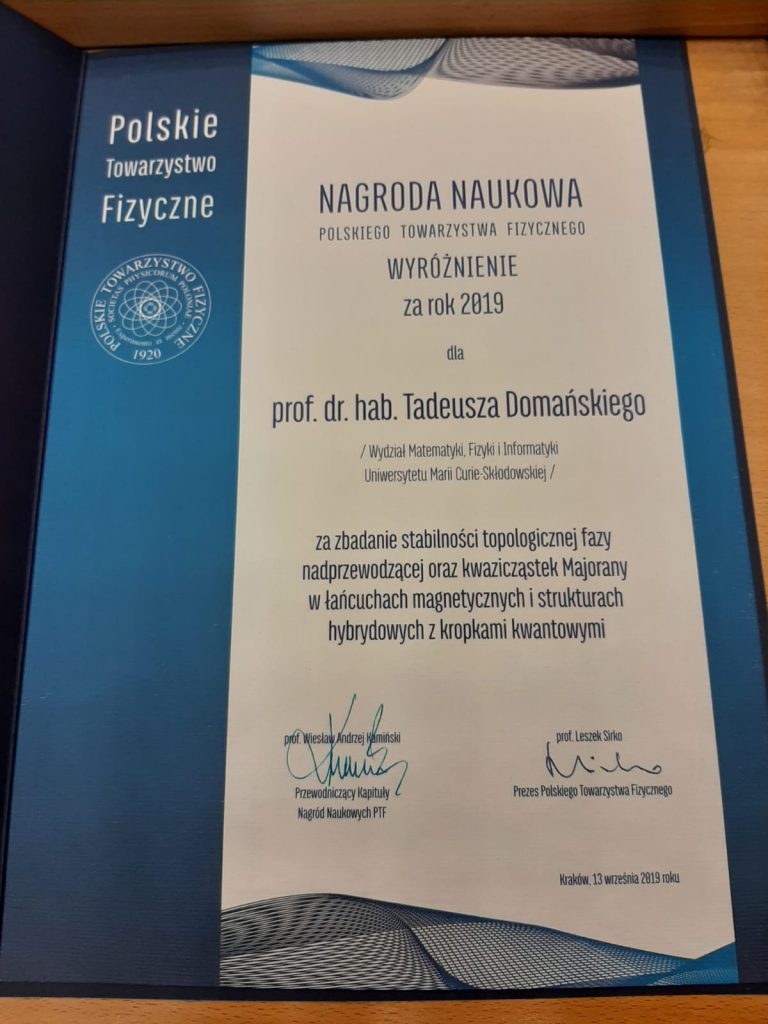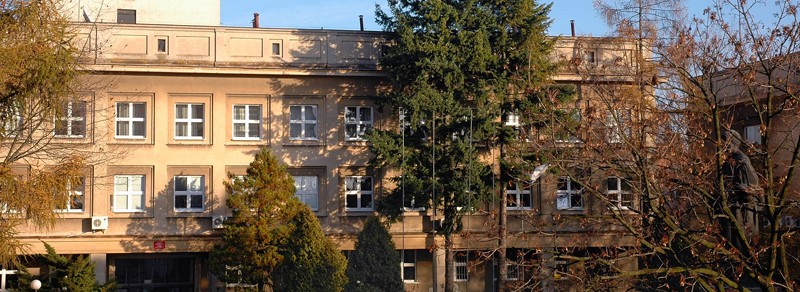Next seminar is scheduled on November 26, 2019 at 10.15 a.m., room 341, during which prof. Pradeep V. Malaji (Department of Mechanical Engineering, BLDEA’s VP Dr. PGH CET, Vijayapur) will give his talk entitled “Pendulum as Energy Harvester”.
SEMINAR, October 22, 2019
Next seminar is scheduled on October 22, 2019 at 10.15 a.m., room 341, during which prof. George Pogosyan (Yerevan State University, Armenia; JINR Dubna, Russia) will give his talk entitled “Zernike superintegrable system and new disk polynomials”.
SEMINAR, October 1, 2019
Next seminar is scheduled on October 1, 2019 at 10.15 a.m., room 341, during which dr Nicholas Sedlmayr will give his talk entitled “Thermalization in closed and open quantum systems”.
26th Nuclear Physics Workshop
From 24 to 29 September 2019 nuclear physicists will join
This year over 70 participants attend in the meeting. We have planned over 50 lectures and moreover several poster presentations.
PhD for Agnieszka Szulerecka
On 20
Congratulations for the new doctor in physics!
Ig Nobel prize for our graduate
Prof. Tomasz Paterek from Nanyang Technological University, Singapore with collaborators was awarded Ig Nobla prize from biology for discovering that dead magnetized cockroaches behave differently than living magnetized cockroaches.
Ig Nobel prize is awarded for serious research that ha
Ig Nobel prize web page: Improbable Research
Honoured paper: Scientific Reports
Prof. Paterek graduated from Maria Curie-Skłodowska University in theoretical physics. His master thesis was prepared under
The Scientific Prize of Polish Physical Society for Tadeusz Domański
Prof.Tadeusz Domański was distinguished with the Scientific Prize of Polish Physical Society for the 2019 year. He was awarded for investigations of topological stability of superconducting phase and Majorana quasiparticles in the magnetic chains and hybrid structures with quantum dots.
The prize was handed during 45. Congress of Polish Physicists.
Congratulations!

SEMINAR, June 18, 2019
Next seminar is scheduled on June 18, 2019 at 10.15 a.m., during which Prof. Zdzisław Musielak (University of Texas at Arlington, Leibniz-Institut für Sonnenphysik, KIS) will give his talk entitled “Detection and Habitability of Exomoons”.
SEMINAR, June 4, 2019
Next seminar is scheduled on June 4, 2019 at 10.15 a.m., during which prof. dr hab. Krzysztof Pomorski will give his talk entitled „Common Polish-Chinese SHENG-project on: Theoretical investigation of the low and middle energy nuclear fission”.
SEMINAR, May 21, 2019
Next seminar is scheduled on May 21, 2019 at 10.15 a.m., during which dr hab. Katarzyna Roszak (Wrocław University of Science and Technology) will give his talk entitled „ Entanglement and objectivity in pure dephasing models”.
